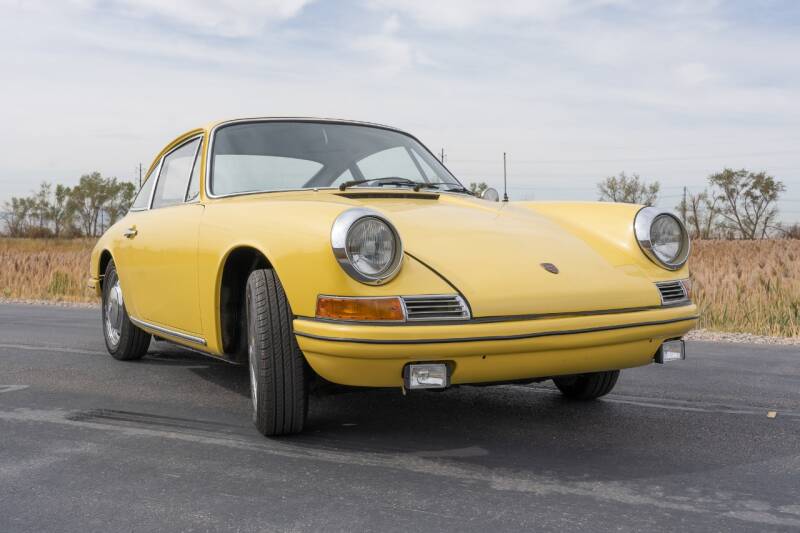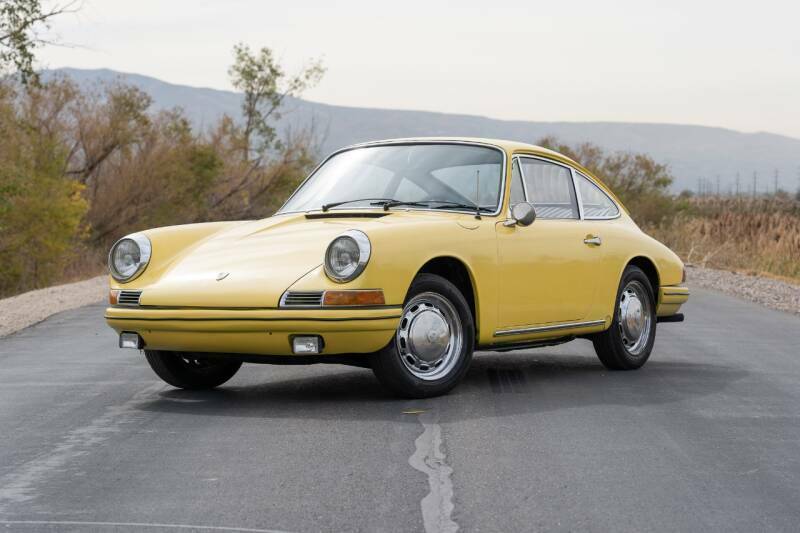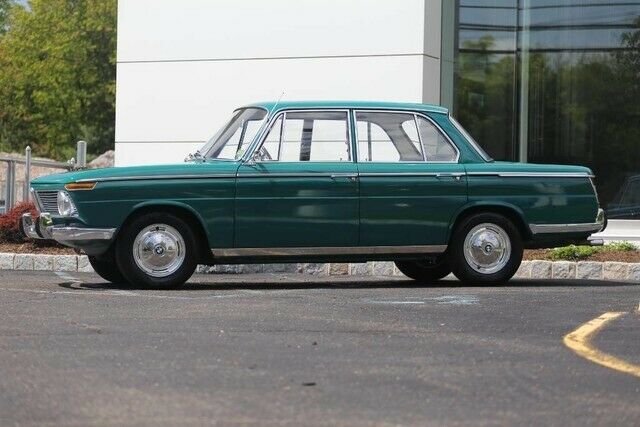I’m officially declaring that spring is in the air. We are into mid-March now and soon the weather will turn for the better. That means car season is here and convertible season is soon to follow. Today, I wanted to look at one of my old favorites that always bring joy to me no matter the engine size or the condition – the W113 Mercedes-Benz SL-Class. I think these are one of the most classic Mercedes models in terms of package and usability of them even over 50 years later. I am not alone in this thinking therefore prices are not cheap. However, this 1968 280SL up for sale in Virginia comes in at a somewhat reasonable price and I’m not sure why.
Tag: 1968
Oh Porsche 912. Some look at it as a classic Porsche design minus two cylinders, while others think it’s a Volkswagen Beetle in a 911 shell. They certainly went unloved for some period of time as you’ll hear stories of yesteryear about them being in the local classifieds for $9,999. Now? Triple it. Personally, they are what they are. Yeah, a little down on power, but the long hood cars still have a soft spot in my heart. Unfortunately because they were so cheap, lots of ridden hard, modified, or just straight up used examples come to market today. This 1968 up for sale outside of Salt Lake City, Utah certainly looks to be a survivor, but maybe not the cleanest example out there.
CLICK FOR DETAILS: 1968 Porsche 912 on eBay
1 CommentYou’d be forgiven for looking at the stats of the mid-1960s designed NSU Ro80 and thinking it was a much newer car. At the very least, it seemed quite futuristic compared to what was coming not only out of Detroit, but out of the rest of the world at the time. Aerodynamics were key to its slippery shape, unlike the rest of the world that relied on “jet†styling accents and fins to look fast. A tall, airy greenhouse provided excellent visibility for its passengers and driver. Underneath, power steering, 4-wheel independent suspension, 4-wheel disc inboard brakes and a semi-automatic gearbox with vacuum assisted clutch were the highlights – items that in some cases wouldn’t be found on mainstream cars until very recently. Then there was the engine; at only 1 liter, it didn’t sound like much to write about – but it was a twin-rotor Wankel engine with over 100 horsepower. Indeed, the power output wasn’t much less than most inline-6s of the day with 2 1/2 times the displacement. Couple that into a reasonably lightweight sedan and the performance of the NSU was certainly above average.
Looking at the NSU today, it’s easy to see design elements that were incorporated into later designs, mostly from the 1970s and 1980s. NSU’s parent Audi developed the exterior design elements further a decade and a half later into the Audi 100, most notably. Squint, and you can see it. But when I look, I also see elements from BMWs, Mercedes-Benz, Alfa Romeo, Citroen, Lancia, Fiat, and even Toyota, Mazda and Nissan – this was truly an influential design. For the most part, it was also a fringe automobile though, so not many people knew them or about the advanced platform that had been developed. They were also a bit too far ahead of the curve, suffering rotor-tip seal problems that wouldn’t really be solved for another decade by Mazda. On top of that, they were quite expensive at the time – meaning that for well-heeled buyers, the unreliability was even more unacceptable than normal. More recently in the past decade, the avant-garde Ro80 has finally been recognized by the world as a truly special page in history and a turning point in automotive design. That’s why it’s so special to see them pop up for sale, especially in America where they’ve always been rare:
CLICK FOR DETAILS: 1968 NSU RO80 on eBay
6 CommentsGreen is good, even in small doses. The Mercedes-Benz Pagoda series was all about utilizing two-tone color schemes beyond the normal silver over black or black over tan. They’d mix complementary colors together usually on the hard top, hub caps, and interior. They weren’t afraid to take chances, even with non-traditional colors. Case in point, this 250SL finished in white with a Dark Olive hard top and Green Parchment MB-Tex upholstery. Even better? It’s got a 4-speed manual too.
CLICK FOR DETAILS: 1968 Mercedes-Benz 250SL on eBay
Comments closedBMW’s long road to recovery in the postwar era was interesting to say the least. Before the war, BMW had a moderately successful series of luxury and sports cars with its 326, 327 and 328 lineup. However, the market for those cars in Germany didn’t exist in the early 1950s and the technology was quite dated, so BMW found itself reliant upon an Italian-designed and licensed bubble car — the Isetta — to sustain early sales. Of course, with their motorcycle expertise, the air-cooled twins that found their way into Isettas were reliable (though not sprightly) units.
Though economical, a family sedan the Isetta did not make, so starting in 1957 BMW stretched the two seats into four and created the 600. With just shy of 600cc from an enlarged rear-mounted engine borrowed from a R67 motorcycle and a four-speed manual gearbox driving a new semi-independent trailing arm rear end, the 600 was a serious step forward for the company. The improvements were masked behind a familiar face (which still served as the primary door, as with the Isetta) and the 600 was not a sales success, with just shy of 35,000 produced. Intended to compete with the Beetle, it offered little respite from Volkswagen’s steamrolling sales success.
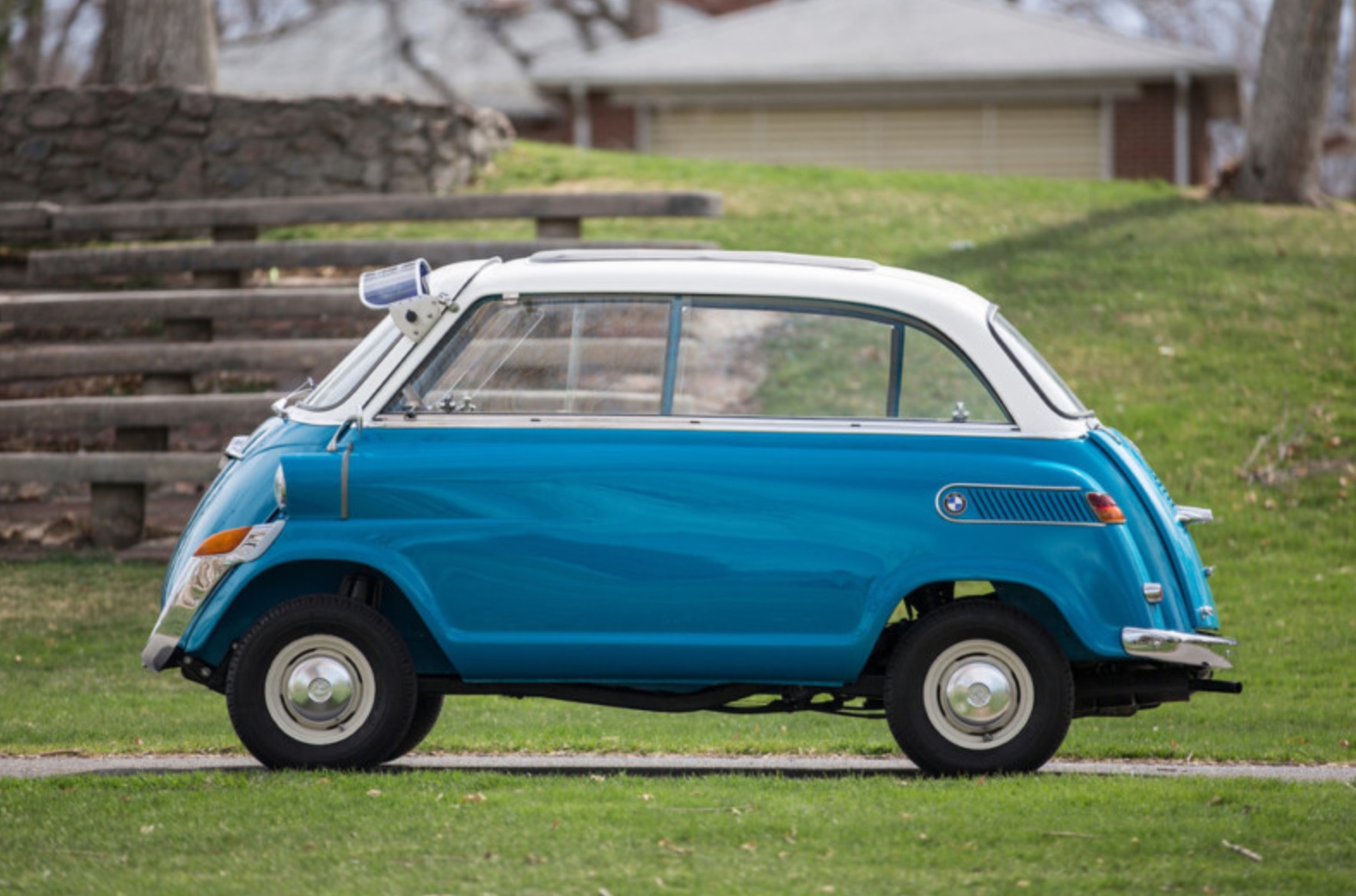
To remedy this, BMW continued to develop the 600 chassis into the larger and more conventional 700 model. Launched in 1959 as BMW skirted attempts by Daimler-Benz to purchase the Munich-based firm, the 700 heralded BMW’s first true postwar sedan. Yet in spite of the conventional sedan proportions, the 700 retained the motorcycle-based air-cooled flat-twin in the back, driving the rear wheels. Back when BMW’s naming conventions matched their engine sizes, the eponymous sedan’s power was upgraded to nearly 700cc and 30 horsepower — 50 percent more than the 600. Styling came from Italian Giovanni Michelotti, who would go on to pen the next generation of BMW sedans.
/stories/2018/08/491791.jpg)
The 700 was available in three configurations — the conventional sedan, a sporty-rooflined coupe, and a convertible, each sporting era-correct tail fins. True to the company’s history, BMW even raced the 700 in rally, circuit and hill-climb events. The 700 would go on to be a relative sales boom for the company, bridging the gap between the borrowed Isetta models and the company’s first postwar conventional sedan: the water-cooled, front-engine Neue Klasse you probably remember best in the form of the legendary 2002.
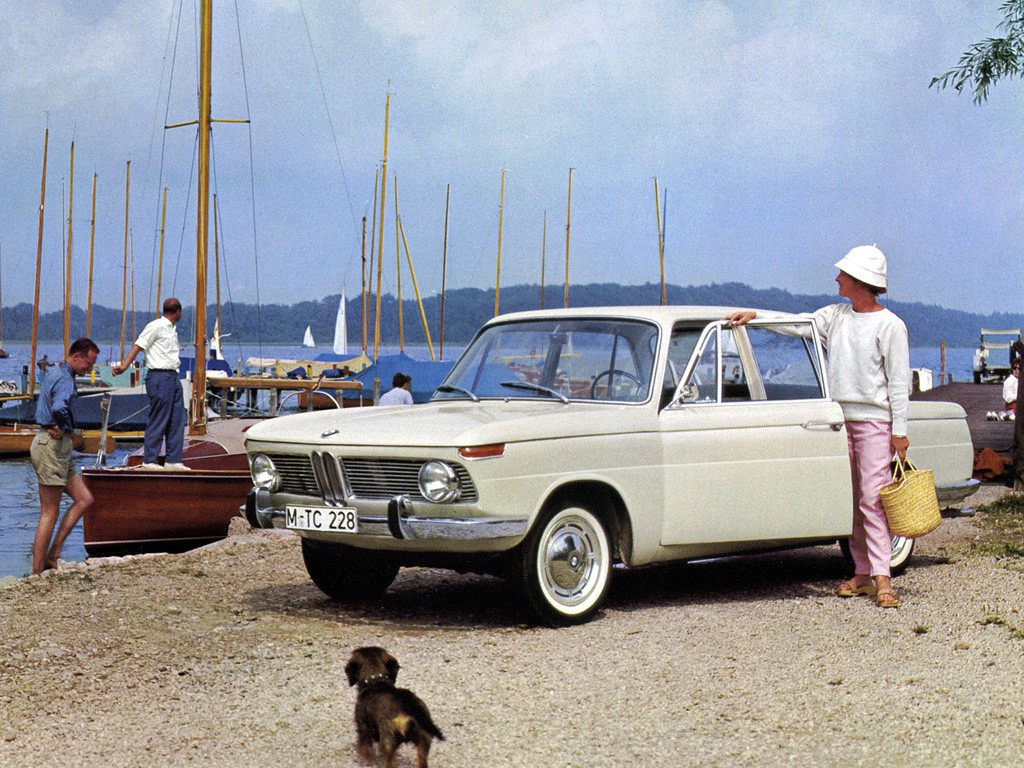
The Neue Klasse launched with quite a splash in 1961 at the Internationale Automobil-Ausstellung in Frankfurt, and signaled a new direction for the company. Badged the 1500 due to its 1499cc M10 water-cooled inline-4, the 1500 was later joined by larger displacement models, some with fuel injection; the 1800 in 1963 and the 2000 in 1966. In 1964, the 1500 was replaced by the enlarged 1600. The M10 was punched out to 1573cc and now produced 4 more horsepower for a total of 84. While the 1600 wasn’t the first Neue Klasse, it was the first commercially successful model; between the beginning of 1966 and the end of 1968, BMW produced nearly 70,000 units of this model alone. But if you spent a bit more, you could get its larger-engined sibling:


